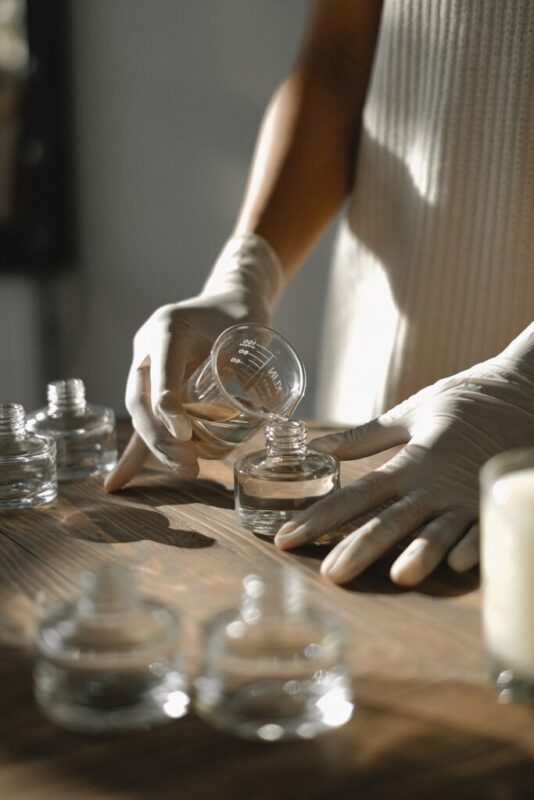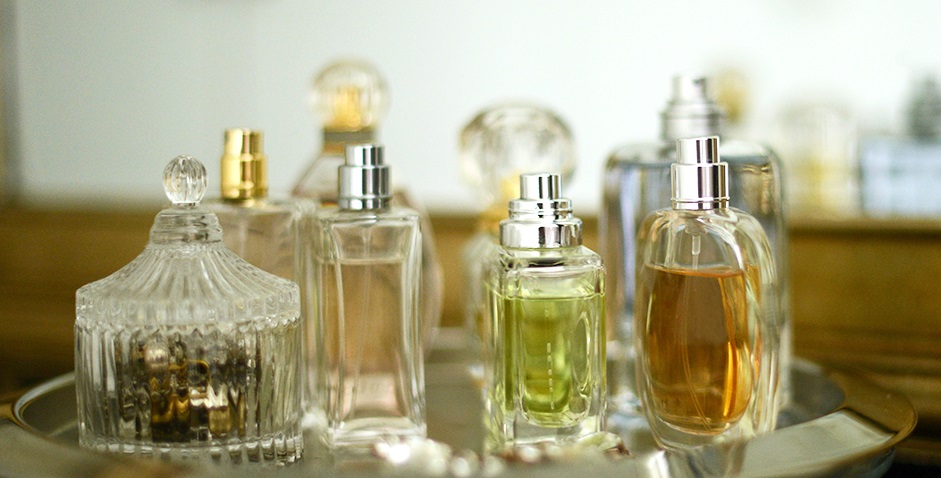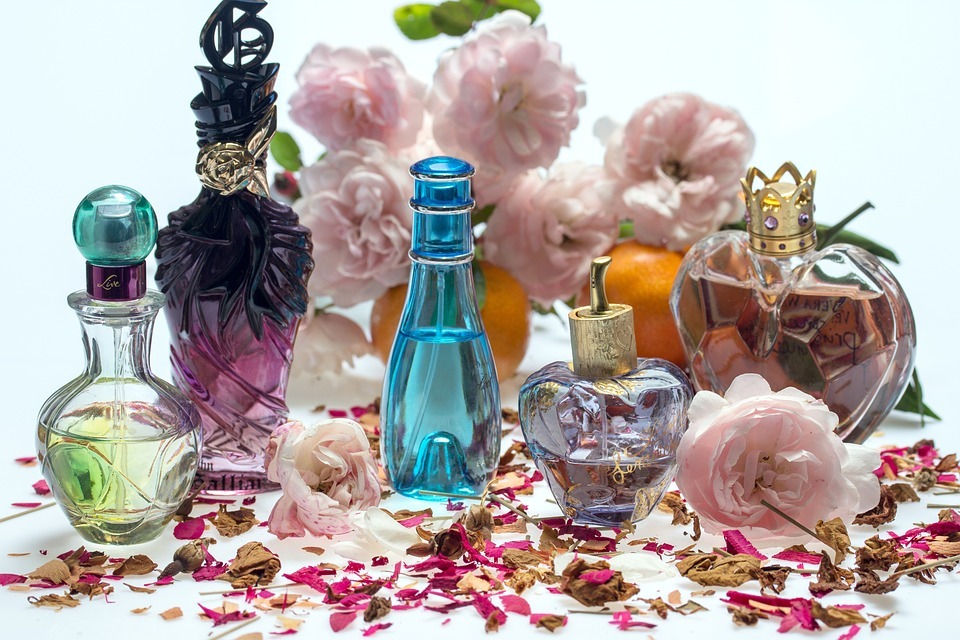Crafting Your Signature Scent: A Beginner’s Guide to Making Perfume. Today, we’re diving nose-first into the fascinating world of DIY perfume-making. Have you ever dreamed of concocting your very own signature scent? Well, you’re in for a fragrant adventure, but before we mix and mingle with essential oils, let’s ponder the big question: Why in the world would you want to create your “own” perfume?
Why would you want to make your own perfume?
Well, for starters, a fragrance is not just a fragrance; it’s a narrative about you and what you like. It is an olfactory signature that whispers stories to those near you. In a world filled with many scents, why would anyone want to create their perfume? Well, let’s discuss.
Tailored to Your Tastes: When you create your “own personal perfume”, you’re the master chef of your olfactory kitchen. You have complete control over the end product. So, it’s essential to choose the perfume that resonates with you. Blend them harmoniously and create a fragrance that mirrors your taste and style.
Uniqueness Personified: We’re all individuals, each with our quirks, memories, and dreams. Making your own perfume allows you to distil your essence into a scent that is uniquely and unmistakably you. Only you would know what you like.
Therapeutic Journey: Making yourself a perfume to your needs can be about the journey of doing it. How many people do you know have created their unique perfume blend? Only a few. Selecting the essential oils and experimenting with combinations is so therapeutic. Even waiting for your creation to mature can have a healing effect on the soul. It is enjoyable to do something that only a few people have done.
Emotional Resonance: By crafting your perfume, you infuse it with the emotions and memories that matter to you. In a human sense, it is your own personal time capsule. You can encapsulate the joy of blooming flowers, the warmth of a summer day, or the cosiness of a winter evening.
It’s nice to have: Developing your own perfume is a rebellion, a celebration of individuality. It’s about embracing the power of scent. To tell your story and create a fragrance that resonates with the very core of who you are.

A beginner guide to making your own perfume (what do you need?)
Okay, so you want to develop your own perfume? But now we have to go the next step. How do you do it, and what tools and ingredients do you need? Let us discuss step by step.
Gather Your Tools and Ingredients
To kick things off, you’ll need a few essentials: essential oils, carrier oils, alcohol, measuring cups, and mixing bottles. It sounds like a science experiment, but trust me, it’s more straightforward than it seems.
Essential Oils:
Essential oils in perfume aromatic extracts from plants like flowers, leaves, or spices. These natural compounds provide the defining scents in fragrances. Essential oil is often extracted through methods like distillation or cold-pressing. They offer a diverse range of notes, from floral to woody. Essential oils form the heart, or base, of perfumes, determining the top, middle, and base notes. They are the fundamental building blocks influencing a fragrance’s character, depth, and complexity.
Where do you get Essential Oils? Essential oils can be found in health food stores, speciality fragrance shops, or online retailers. Ensure they are pure and suitable for use on the skin.
Carrier Oils:
Carrier oils in perfume serve as a neutral, non-volatile foundation to dilute and stabilize essential oils in perfumes. They are extracted from nuts, seeds, and carrier oils like jojoba, almond, or fractionated coconut oils. It acts as a vehicle, enhancing the longevity and skin application of scents. These oils are unscented or have a mild aroma, enabling them to blend with essential oils.
Where to Get Them: Carrier oils, like jojoba or sweet almond oil, can be found in health food stores, pharmacies, or online. Look for cold-pressed, unrefined options for the best quality.
Alcohol:
Alcohol, usually ethanol or denatured alcohol, is a crucial ingredient in perfume. It acts as a solvent, diluting essential oils and blending them into a harmonious fragrance. In perfume making, alcohol aids in the evaporation of scents upon application, allowing the aroma to disperse.
Where to Get It: High-proof, undenatured alcohol (such as perfumer’s alcohol) can be purchased online or in some speciality liquor stores. Some perfumers also use vodka as an alternative.
Measuring Tools:
Where to Get Them: Accurate measuring cups, beakers, or graduated cylinders are essential for precise measurements. You can find these at kitchen supply stores, online retailers, or craft stores.
Mixing Bottles:
Where to Get Them: Dark glass bottles with tight-fitting lids are ideal for storing your perfume and protecting it from light. These can be found at craft stores, online, or recycled from empty perfume bottles.
Funnel:
Where to Get It: A small funnel can be handy for pouring liquids into bottles without spills. You can find funnels at kitchen supply stores or online.
Pipettes or Droppers:
Where to Get Them: To precisely measure and transfer small quantities of liquid, use disposable pipettes or glass droppers. These are available in science supply stores, pharmacies, or online.
Notebook and Pen:
Where to Get Them: Keep a dedicated notebook for recording your perfume recipes, adjustments, and observations. Any stationery store will have notebooks, or you can use a digital note-taking app.
Labels:
Where to Get Them: Labeling your perfume bottles is crucial for identifying your creations. Blank labels or stickers can be found in office supply stores or online.
Storage:
Where to Get It: Store your essential oils and carrier oils in a cool, dark place to maintain their quality. Wooden storage boxes or essential oil cases can be found online or in speciality stores.
Know Your Notes
Perfumes are like musical compositions, with top, middle, and base notes playing harmoniously together. Top notes are the first impression, middle notes are the fragrance’s heart, and base notes linger on. Think of them as the ingredients in a recipe – each contributing to the overall aroma.
Choose Your Aromas Wisely
Now comes the fun part – picking your favourite scents! Have you ever asked yourself which perfume scent is your favourite? Whether you’re into florals, citruses, spices, or woods, the world of essential oils is your oyster. Just remember, balance is critical. You don’t want one scent stealing the show.
The Art of Blending
Imagine you’re in the kitchen cooking up a storm. Start with your base notes, add the heart notes, and finish with the top notes. It’s all about layering and experimenting. Test as you go, like adding ingredients to a recipe, until it tastes right.
Patience is a Virtue
Now you have to wait. After you’ve finished your masterpiece, it’s time to play the waiting game. Like a good stew, your perfume needs time for the flavours to meld. Let it sit for a few weeks, and let the magic happen.
The Big Reveal
Finally, the moment of truth! Spritz a bit on your wrist, inhale and savour the unique aroma you’ve created. It’s like a reflection of your personality in a bottle – pretty amazing, right?

How to formulate your perfume?
Write down your own perfume formula.
Take the necessary time at this juncture to stay aligned with your ultimate perfumery objective. A perfume formula is usually expressed as a percentage (out of 100 or scaled to 1,000 or 10,000 for advanced formulations). Maintaining a consistent total enables a comprehensive understanding of each ingredient’s influence within the formula, aiding in adjustments and modifications.
Pro-tip: It’s essential to document your formula meticulously – ensuring that the blend responsible for your irresistible allure remains preserved!
What kind of perfume do you want to create?
To start your perfume journey, let’s determine the essence you’re craving for your fragrance.
Do you yearn for the floral embrace of a garden in bloom, the earthy allure of a walk through the woods, or perhaps a blend that intertwines the best of both worlds? Are you envisioning a scent that’s light as a feather, dancing in the air or delving deeper with a magnetic and captivating aroma?
And what about those standout notes? Are you eager to highlight the enchanting essence of a single flower, like the romantic Rose, or maybe the woody sophistication of Cedarwood? Let’s dive into the scented symphony and set the stage for your fragrance masterpiece!
Delve into your inspiration, perhaps a creative story or a cherished memory you aspire to encapsulate through the fragrance. A scent is a complex composition comprising numerous ingredients, yet I recommend experimenting with a combination of fewer components, possibly around ten or less, as you start your perfumery journey. This approach will allow a more focused and manageable exploration of scents and their interactions.
Combine all the perfume elements.
You have a plan and a formula, and now it is time to put the various essential oils and perfumes into one of your bottles. Upon formulating your initial fragrance blend, gently shake the concoction and then evaluate its aroma on a scent strip. These scent strips, available in various shapes and sizes, are commonly found in fragrance retailers. You might encounter strips with square ends, ideal for isolating and assessing individual ingredients, or those with pointy ends, better suited for evaluating complete perfumes.
If you’re using pointy scent strips, dip the pointed end into your fragrance blend, allowing it to absorb the scent without coming into direct contact with your nose. Smell the strip to discern and assess the fragrance’s profile without external influence.

Reduce the concentration of your perfume composition.
To proceed with your perfume-making process, you’ll require perfume alcohol as the solvent. Please note that the type of solvent may vary depending on whether you’re creating a candle or a room freshener.
For beginners and to minimize ingredient wastage, it’s advised to pre-dilute your ingredients at 10%. Dilution in alcohol is a crucial step as it makes the fragrance more approachable. Smelling a blend of pure elements can be overwhelming and appear compact, but dilution allows for a more manageable and discernible scent profile.
Tips and Tricks
Experiment with different ratios of essential oils to find your perfect blend.
Feel free to mix scents you would prefer to avoid pairing. It is sometimes the most unexpected combinations that create pure perfume magic.
Keep a notebook handy to jot down your recipes and adjustments for future reference.
Conclusion
Crafting your perfume is an enchanting voyage of self-expression. It’s all about exploration, embracing the scents that make your heart swoon, and weaving a fragrant tale uniquely you. Ready to dive into the scented realm of perfumery? Let your creativity bloom as you venture into concocting your signature scent. It’s time for your aromatic masterpiece to unfold!

